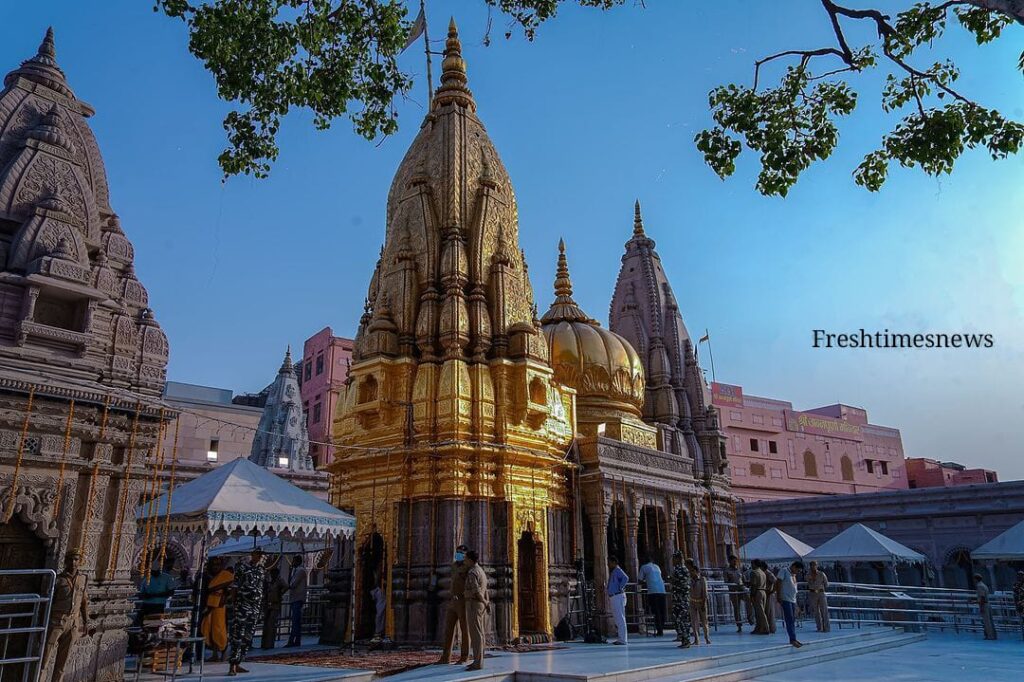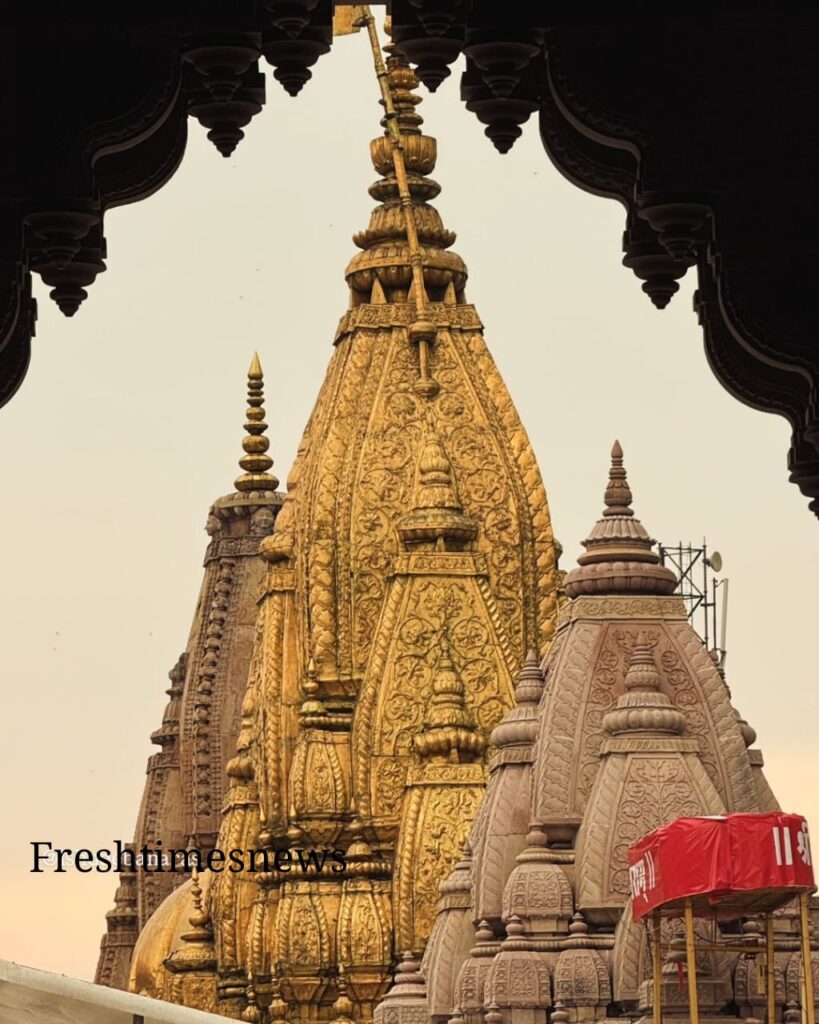
Introduction
Shri Kashi Vishwanath Mandir is one of the most revered Hindu temples in India, dedicated to Lord Shiva. Located in Varanasi, Uttar Pradesh, the temple is a Hindu pilgrimage site and one of the twelve Jyotirlinga shrines.¹
Temple Architecture and Layout
The temple complex consists of a series of smaller shrines located in a small lane called the Vishwanatha Gali, near the river. The linga of the main deity at the shrine is 60 cm tall and 90 cm in circumference, housed in a silver altar. The main temple is a quadrangle, and there are shrines to other gods all around it.
History and Rebuilding
The original temple was demolished by Mohammad of Ghor in 1194, and subsequently rebuilt and destroyed several times. The current structure was constructed in 1780 by Ahilyabai Holkar, and has undergone several renovations and restorations since then.
Present-Day Temple
Today, the Kashi Vishwanath Temple is a popular tourist destination, attracting millions of visitors every year. The temple has been managed by the Shri Kashi Vishwanath Temple Trust since 1983. In 2021, a major redevelopment of the temple complex was completed, and the Kashi Vishwanath Dham Corridor connecting the Ganges River with the temple was inaugurated by Prime Minister Narendra Modi.
Festivals and Traditions
The temple celebrates several festivals throughout the year, including Maha Shivaratri, Rangabhari Ekadashi, and Vasant Panchami. The temple also has a tradition of performing jalabhishek on a shivling, which has been done for over 90 years.
Table of Contents
Shri Kashi Vishwanath Ancient Period
Shri Kashi Vishwanath Mandir, located in Varanasi, Uttar Pradesh, is one of the most revered Hindu temples in India. The temple has a rich history dating back to ancient times.
Ancient Era (1000 BC – 500 AD)
The Kashi Vishwanath Mandir is believed to have been built during the ancient era, with some estimates suggesting it was constructed around 1000 BC. The temple was dedicated to Lord Shiva, who is considered the patron deity of the city of Varanasi.
Medieval Era (500 – 1600 AD)
During the medieval era, the temple was destroyed and rebuilt several times. The most notable destruction occurred in 1194 AD, when the temple was razed by the Muslim invader Qutb-ud-din Aibak. The temple was rebuilt in the 13th century by a local king.
Mughal Era (1600 – 1750 AD)
During the Mughal era, the temple was again destroyed, this time by the Mughal emperor Aurangzeb in 1669 AD. The temple was rebuilt in the 18th century by the Maratha ruler Malhar Rao Holkar.
Modern Era (1750 – present)

In the modern era, the temple has undergone several renovations and restorations. The most notable renovation occurred in the 1960s, when the temple was rebuilt in its current form. Today, the Kashi Vishwanath Mandir is one of the most revered Hindu temples in India, attracting millions of devotees every year.
Interesting Facts
- The Kashi Vishwanath Mandir is considered one of the twelve Jyotirlingas in India, which are considered to be the most sacred shrines of Lord Shiva.
- The temple is built on the banks of the Ganges River, which is considered sacred in Hinduism.
- The temple’s architecture is a blend of ancient and modern styles, with intricate carvings and sculptures adorning its walls.
- The temple is open to devotees of all faiths, and is considered a symbol of unity and harmony.
Overall, the Kashi Vishwanath Mandir is a sacred and historic temple that holds great significance in Hinduism. Its rich history, stunning architecture, and spiritual significance make it a must-visit destination for devotees and tourists alike.

